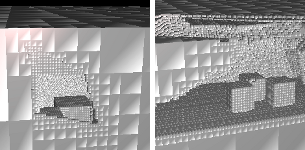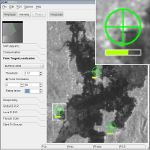
News
DAAD German Academic Exchange Service
C2 Visual analysis of multimodal sensor data
Project Leader
Prof. Dr. rer. nat. Volker Blanz, Prof. Dr.-Ing. Andreas Kolb, Jun.-Prof. Dr.-Ing. Marcin Grzegorzek
Initial Situation
The thematic focuses of this subproject are constituted by the object and person monitoring using two sensor combinations: multi-spectral and detph sensors, as well as THz and optical sensors. Furthermore, spatially and temporally compressed visualizations of 2D and 3D data are considered.
In the context of human security, besides automatic systems, monitored visualization techniques are primarily applied. At the moment, there exist no research results in the field of THz sensor data processing. Current visualizations of multi-spectral data choose fixed bands or band combinations by means of statistic analysis, as for example the principle component analysis (PCA) or the independent component analysis (ICA), and they use simple color codings.
Objectives and Work Plan
The aim of this subproject is to develop new approaches for the visual analysis of multi-modal data. These approaches will be related to the special characteristics of the sensors which are investigated in the Research Training Group. Furthermore, specific abstractions must be realized within an appropriate preprocessing. These are to be designed such that only data relevant to the security or discrepancies related to the psychology of perception are displayed for the security personnel in order to enhance the efficiency of the visualization system. Using depth sensors, a fast segmentation of the scene is possible. Furthermore, the orientation of object surfaces can be estimated, with which local lighting effects yielding spectral-variant intensity changes can be partly reverted. Space-time compressed visualizations of 2D/3D data require a new kind of visual representation exceeding the scope of prior approaches.
 |
 |
|
Real-time accumulation of range data |
Interactive analysis of complex radar data |

